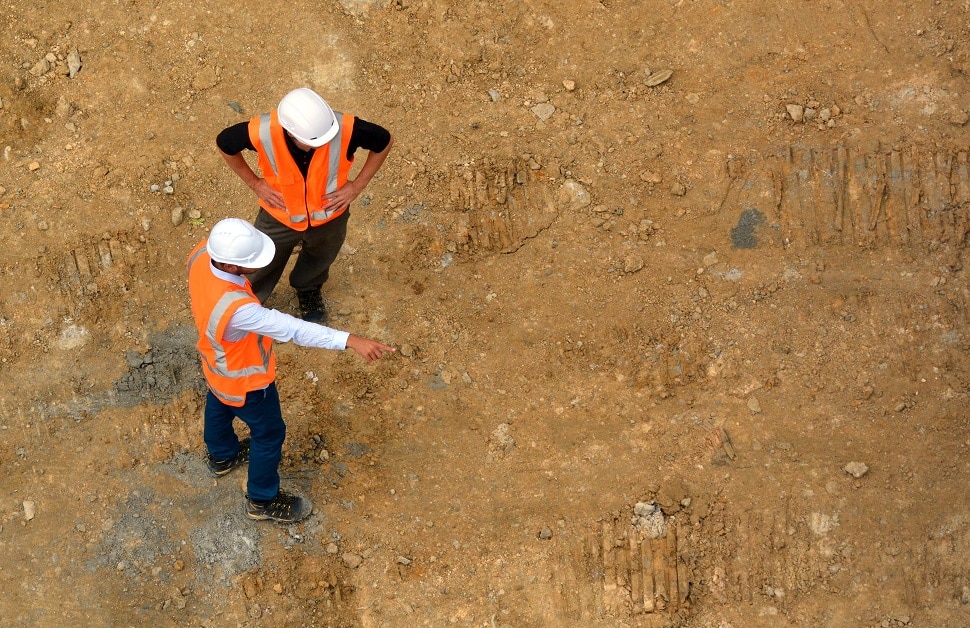
Types of Land to Buy
It may be a factor you overlook, but if you are considering buying a plot of land as part of a development, the importance of understanding the different types of land cannot be stressed enough. Without a knowledge of each type of land – or, more specifically, the type of land you are thinking of buying – it could be the case that the plot of land you purchase doesn’t fit the purpose, wasting your time, costing you money, and forming a new challenge as you attempt to make it work against the odds.
Comparing the situation to a property purchase, the concept of choosing the incorrect property type is far easier to grasp. For instance, mistaking a farm for a generic residential property, a terrace house for a commercial office, or an abandoned warehouse for a private garage would be far more difficult to do than confusing green belt land with greenfield land. For this reason alone, estate agents and other professionals with knowledge of the land or property purchasing process can be vital.
Types of Land
Depending on your reason for buying land, the type of land will play a key role in the decision-making process. Choosing the incorrect type of land, however, would likely cause lengthy delays or potentially ruin your entire project, possibly even causing you to sell your new plot and reinvest in a more suitable one.
That said, intentionally choosing to buy an unsuitable patch of land with a view to altering it to the fit the purpose of your planning project would likely lead to more work, but it could result as a shrewd approach. A seasoned developer could find that the cost of a piece of agricultural land, for example, is lower in an otherwise popular area.
Buying the plot and converting present agricultural buildings into a set of new homes could be an overall cheaper process than buying an empty plot of land ready for adding new infrastructure or simply buying properties that are already fit for purpose. For the sake of clarity, however, the section below focuses solely on types of land and the traditional uses for each category.
What are the 6 Types of Land Use?
Consisting of a mix of terms used by auctioneers, estate agents, land developers, surveyors, appointed representatives and other professionals operating within the planning process, common types of land primarily include the six categories of:
Agricultural Land
Formed from arable land, pasture land and crops, agricultural land is designed to produce natural resources and house livestock.
Aside from any developments that are relevant to agricultural processes, this type of land is devoted to farmland in rural areas. Due to the land being designed for farms and other agricultural uses, it rarely undergoes a transformation into another form of land.
Brownfield Land
Often applicable to plots of land that are contaminated through previously being used for commercial or industrial purposes, brownfield land is an area that was once developed but is now unused.
Although any contaminants would need to be eradicated from the site, brownfield land is usually cheaper to buy and – as developing the land would benefit the environment – it can be easier to gain planning permission than on a greenfield site.
Contaminated land
When evidence of hazardous substances is found on brownfield land, it is then more accurately recognised as contaminated land. Contaminants may include asbestos, chemicals, gases, oil, radioactive substances, solvents, tar and certain metals.
As with brownfield land, the process of removing all hazardous substances from contaminated land could be difficult, but it may be easier to receive planning permission as it would lead to an improved state of biodiversity.
Green Belt Land
Usually situated on the outskirts of towns and cities, green belt land is a section of countryside that acts as a buffer between urban areas. It is protected from development projects, allowing it to remain preserved and prevent all rural areas and rural properties from being replaced by urban features.
Due to it serving as a border around cities and towns, building new homes or commercial properties on green belt land is often forbidden. However, there may be exceptions if it is intended for agriculture or recreational activities.
Greenfield Land
Present in both rural and urban areas, greenfield land is any area that hasn’t previously been developed and therefore has no existing infrastructure. It holds a mix of advantages and disadvantages.
For example, the lack of previous developments means that greenfield land requires less clearance and fewer changes, making the process cheaper and easier. However, the local planning authority may be less inclined to accept a planning permission application as it would negatively impact biodiversity.
Strategic Land
Although not necessarily a widely known term, strategic land is a type of land that could be valuable now or in the future. If it is near to an already developed area, an area that is set to undergo a significant development, useful features such as motorways, or popular attractions, for example, it could be a shrewd and profitable plot of land for developers.
Likewise, a piece of land could be developed or added to as a way of linking two areas together, or it may reduce the developer’s costs to increase profit margins as a result of being cheaper or easier to build on or gain planning permission.
Choosing the Right Land for You
Using the information above, you can determine the most suitable type of land for your project based on available plots of land for sale. Location will also play a key role in the decision-making process, as it may be more expensive to buy land in a more desirable area, but by choosing a different type of land, you could find a way of getting a better deal. At this point, you will need to consider the cost of land by area.
In terms of your approach, you may opt for land that already suits the purpose of your development, or you could make significant changes to an unsuitable piece of land, with the intention of turning a profit by utilising a high-value area in a way that enables you to purchase land without paying an extortionate amount. Either way, if done correctly, it is perfectly plausible that you will be able to successfully meet the aims of your planning project.





